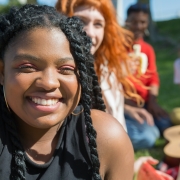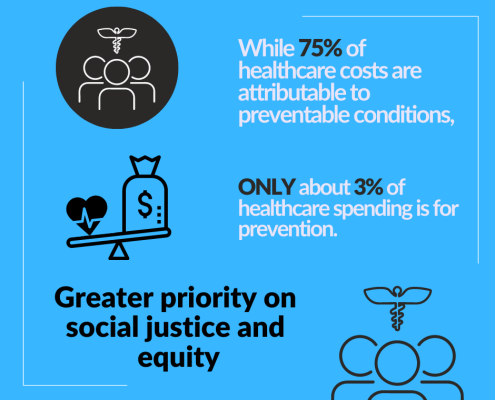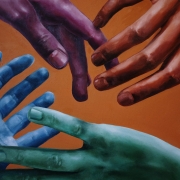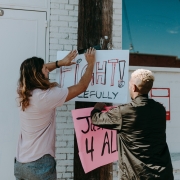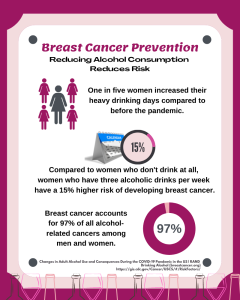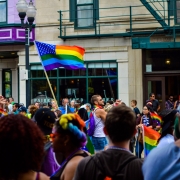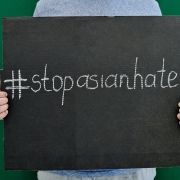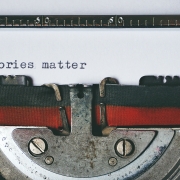Tackling the Alcohol Culture on College Campuses: Do Late Night Programming Alternatives Work?
Imagine thousands of college students, gathered in a carnival atmosphere, some playing inflatable games, others climbing a rock wall, many dancing under the moonlight to a live band. Here and there, small groups are huddled together, with smiling faces, taking selfies. But wait… something is missing. None of them are holding those ubiquitous red plastic cups, the ones young people always have when they’re partying, the ones that hold their alcoholic drinks.
Why? Because this is a special kind of event, part of San Diego State University’s Aztec Nights, a series of late-night activities organized to meet students’ social needs. Held during the beginning of the school year, it’s where new and returning students get a chance to mix and mingle in a healthy atmosphere, grab free cookies, stickers, water bottles, get their caricatures drawn, or participate in a dozen other fun activities – all free of charge, and all free of alcohol.
It should be noted that these events are not promoted as alcohol-free, just as a way to have fun. However, they are specifically designed to draw students away from alcohol-based activities at bars, clubs, and house parties, especially during the beginning of the school year when students are establishing new attitudes and behaviors. And research has shown that this approach works, reducing substance misuse and associated harms.
Such problems have long plagued colleges and universities. In addition to declines in academic performance, excessive drinking has been associated with personal injuries from fights, vandalism, property damage, sexual harassment and assault. Many deaths have also resulted from alcohol poisoning occurring during house parties where heavy drinking is the norm. And with binge drinking rates hovering around 40% for decades, college-based prevention programs have been unable to stem the tide.
The reason, according to an article published by The Chronicle of Higher Education, is that efforts have been focused mostly on education, providing information about the hazards of drinking and the benefits of a healthy lifestyle. What is needed, is to focus directly on the drinking culture, which is based on the idea that excessive drinking is not only normal, but an essential part of the college experience. However, because it has become so very entrenched on college campuses, this culture is highly resistant to change.
This is where alcohol-free late-night programming comes in. By offering multiple opportunities for socializing in lower-risk settings, such programs provide another way – besides alcohol-based activities – to facilitate peer bonding and establish social networks. Students need these two functions in their formative years, which they have traditionally acquired through the drinking culture. But no longer, not where LNP has been implemented.
So, how does it work? The key is to hold events on campus on Thursday, Friday, and Saturday nights, during the young-adult prime social times of 9 p.m. to 2 a.m. To compete with the alcohol scene, the events need to be of high quality and designed to appeal to young people. Examples include free movies, carnivals, dances, live music, comedy, casino nights, magic shows, video games, or arts and crafts. Such activities are also scheduled for the first six weeks of the school year, when students are at the greatest risk, according to research.
Recognizing the value of LNP, many universities have adopted them as part of their overall prevention strategy. In addition to SDSU, these have included Stanford, Penn State, Ohio State, and several others. But these programs can be expensive, costing from $200,000 – $300,000 per year, and complex to implement. So, it’s difficult to get them up and running. However, data reflect it’s worth the effort as alcohol-related problems typically cost more than $1 million a year for an average size university.
For those working with colleges on such an effort, the following guidelines are offered to help overcome the challenges and achieve a successful outcome.
- Administrative Support is Crucial
Most LNPs have been helped along by administrative staff within the Division of Student Affairs who acted as a champion for the program. Often this included the formation of a task group to assess the problem and investigate possible solutions. Involvement of student government and other key stakeholders is also important. So, conducting outreach to raise awareness about the value of LNP among appropriate administrative personnel is a good way to get started. - Goals & Objectives
Changing the campus culture is an appropriate goal. Objectives include organizing numerous large-scale events on campus and promoting them with branding designed to establish a new ethos of health and safety for the university. This is what SDSU has done with its Aztec Nights program. However, for a new program, starting with a goal of just diverting students away from alcohol-based activities is more advisable. Transferring one or more already-popular events to late-night hours would be a reasonable first step. - Infrastructure
Planning and organizing of events are usually done by an office within Student Affairs. Implementation is carried out by in-house staff with support from students clubs and organizations. Funded by mini-grants, such groups submit a proposal specifying the theme of the event, its cost, and expected attendance. Program staff provide support with event setup and breakdown as well as promotional activities. - Funding
Funding is dependent on administrative support. During its initial years, a program may have to rely on soft money, such as contributions by various donors on a year-to-year basis. With a more established program, such as SDSU, funding has been institutionalized as a part line item in the general budget. It should be noted that SDSU’s program was started with strong administrative support secured through research showing the program’s effectiveness. - Evaluation
Evaluation should at least include surveys of event participants to obtain data about attendance, student satisfaction, and any drinking on the night of the event. A more thorough evaluation would also measure the impact of LNP on rates of binge drinking and its consequences over time. Learnings should be used to improve the program’s operation as well as program success in reducing alcohol-related problems, which would be helpful in securing additional funding.
The establishment of an LNP, whatever form it takes, is not expected to eliminate all alcohol-related problems. Instead, it should be part of a comprehensive program that includes education, policies that are consistently enforced, and referrals for treatment for students in need. But despite such limits, LNP has shown to be an effective tool to address what has been for years an intractable problem, a tool that should be considered by all institutions of higher education.
# # #
Author:
Dan Skiles
Consultant, IPS
Dan Skiles is a consultant and former Executive Director at the Institute for Public Strategies, a Southern California-based nonprofit that works alongside communities to build power, challenge systems of inequity, protect health, and improve quality of life.

